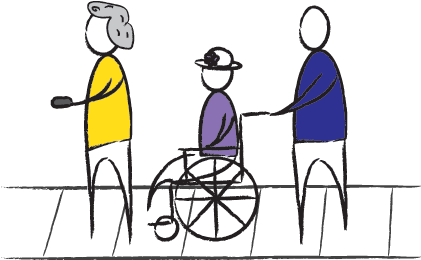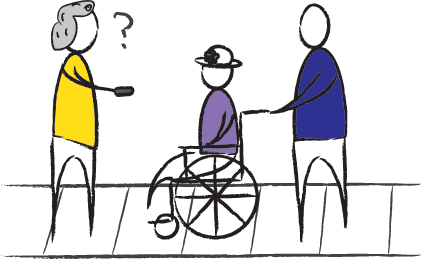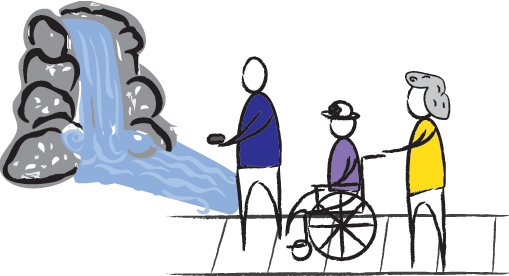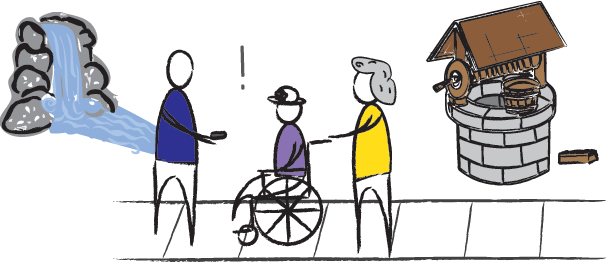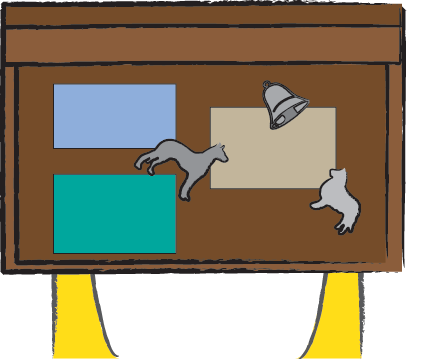 Summary
Summary Research Research |
 Synthesis Synthesis |
 Design Design |
 Solution Solution |
Letterboxer
Scenario 01 |
Wireframes 02 |
Design |
02 Wireframes |
Initially foreseen navigational flow
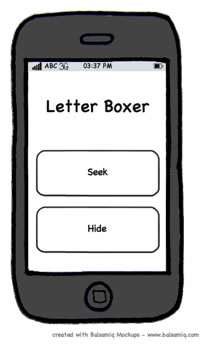 |
Letterboxing, like geocaching, offers the possibility of hiding a box or finding a pre-existing “treasure.”
Since the group is new to this, they decide to “Seek” something first. |
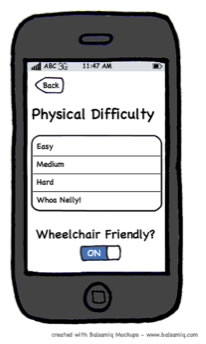 |
Next, the device asks them to choose the physical difficulty of their route. Ruth and Myron are used to walking a lot and Lorraine is in an electric wheelchair.
Therefore, they choose “medium” difficulty, and select the “wheelchair friendly” option, which will only display routes that occur on paved surfaces. |
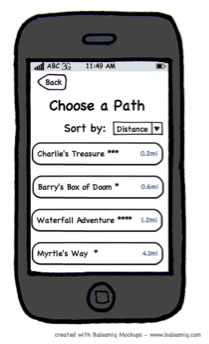 |
Next, a list of medium, wheelchair friendly paths is displayed. Some of these boxes have been pre-placed by the condo development staff; others, such as “Charlie’s treasure,” have been added by other letterboxing participants from the community.
Ruth’s group decides to choose “Waterfall Adventure” because they want to get some exercise but only for a few hours, and because it has received a high star rating from past participants. |
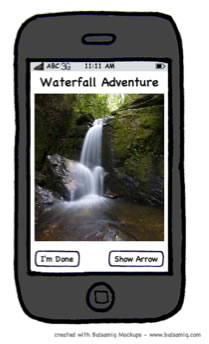 |
The device then displays a picture of the ultimate destination. No one in the group recognizes this place, so they decide to use the “show arrow” view for some navigational assistance. |
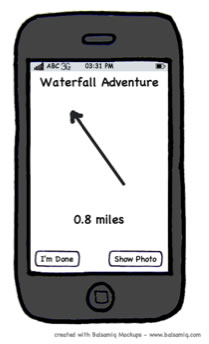 |
By choosing this option, an arrow appears, showing the group which way to walk and for how far, much like a compass (which Myron used a lot during his time in the army.) As they begin to walk in the direction of the park, Lorraine remembers a small waterfall tucked away near the duck pond.
Continuing to follow the arrow, they soon arrive there, and then spend a few minutes searching for the hidden letterbox. |
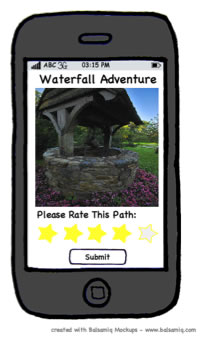 |
They finally locate the box, which was tucked just out of sight by the wishing well.
Inside the box are some old postcards and trinkets. Ruth takes a figurine of a dog (to send to her grandson) and, according to custom, replaces it with a pair of knitting needles.
Ruth presses the “I’m done” button, and the device displays a photograph of the wishing well, verifying that they found the correct spot.
The device then asks the group to rate the path and hunt on a scale from 1 to 5. They give it 4 stars since it was a pleasant yet challenging walk. |
